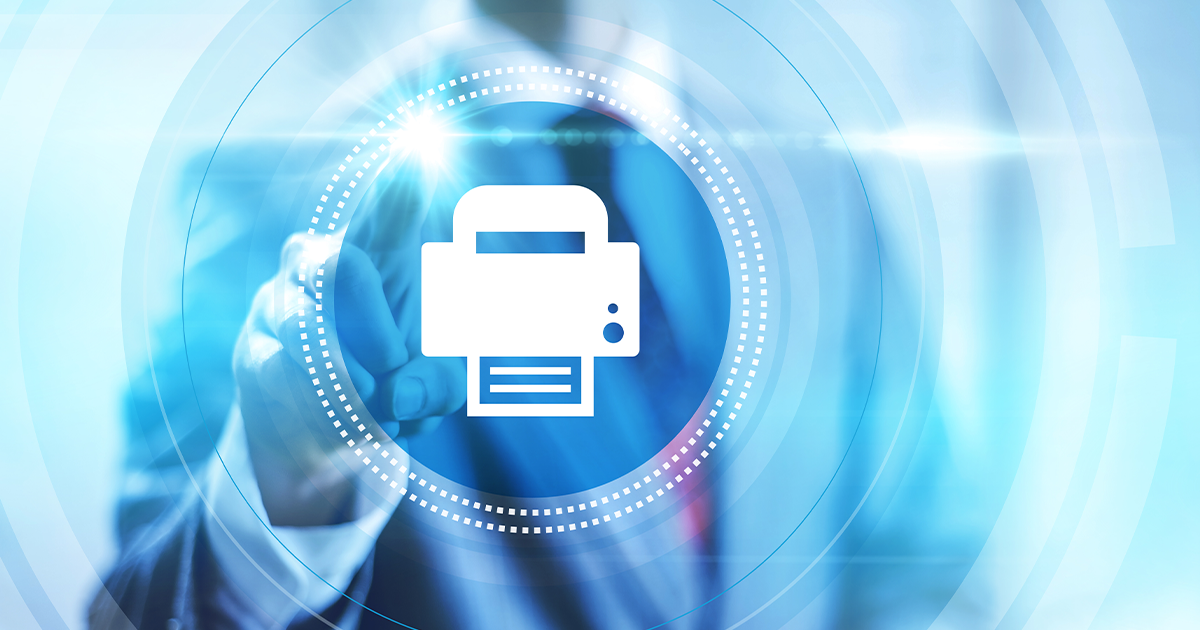We all know it’s important to protect our computers and networks from data breaches. But did you know that hackers can break into a corporate network through its printers?
One security watchdog wanted to prove the point. They attempted to hack into 50,000 network printers worldwide, successfully hijacking nearly 28,000 unsecured printers. That’s a 56% success rate!
What was the ransom? Affected companies couldn’t gain network access again until they agreed to print a five-step guide on printer security.
Clever. And concerning.
The breaches occurred even though most business-class machines made today come pre-installed with robust security features. But as proven in the above experiment, those features often aren’t enabled.
Here are some of the security features on enterprise-class printers, copiers and multifunction devices that need to be enabled to help eliminate unauthorized access, and steps you can take to have peace of mind:
RELATED: How to Conduct a Print Security Assessment
An Encrypted Digital Lockbox
Some printer manufacturers install specialized hardware to protect against intruders. For example, the Canon Trusted Platform Module (TPM) is a security chip embedded in all imageRUNNER ADVANCE models for data security. TPM generates secure cryptographic keys to encrypt and decrypt confidential information such as passwords and data stored in the device. This prevents leaks of sensitive data since the encryption key is stored and controlled in a separate location, protected by the tamper-resistant TPM chip.
Canon imageRUNNER ADVANCE systems have additional standard printer protection features that can limit network communications to the device and disable unused ports so that hackers cannot find a backdoor to your computer networks. These systems can even encrypt all communication to and from the device so that your confidential information is never exposed to hackers. Specifically, the Encrypted Secure Print option uses 256-bit encryption. Even if a hacker does gain access to your network, your printer traffic will be secure.
Routine Security Updates
Hackers look for operating systems that haven’t been updated with the latest firmware and security patches. To ensure your network connections aren’t exposed, Ricoh’s Always Current Technology platform installs the latest features, applications and upgrades directly to your devices as they become available.
For an additional level of security, some printers now have Security Information Event Management (SIEM) integration, which makes it easier for enterprises to include printers in their existing security monitoring systems. In addition to SIEM integration, Canon, Lexmark and Ricoh printers have features that alert users if unauthorized changes to the device’s software are detected. This means that a hacker can’t install malware or change code on your machines to gain access to your network.
Gordon Flesch Company, as a Managed Print Service (MPS) provider, has three options available keeping firmware updated. Customers can choose to have automatic firmware updates installed via cloud services, perform updates on a schedule or when a GFC Service Technician is onsite.
Confidential Printing Modes
Hacking a network is only one way your confidential information can be compromised. Modern multifunction printers now have special modes that protect your printed pages from prying eyes. For example, if you print sensitive information on a shared Ricoh printer, you can use the Locked Job option to prevent the document from being released until you’re standing in front of the printer. A password will be required to allow the print job to be completed so no one else picks up your document from the printer by mistake.
A MPS provider can enable this feature, or even install a pull-printing function using secure print management software so documents are only printed when the appropriate person swipes their ID badge or uses a PIN to release the job.
RELATED: Explore Print Security Bulletins & Resources
Simple Security Measures
While most machines come with built-in security features, there are simple security risks that sometimes get overlooked.
For example, most printers have default administrator passwords and usernames. Changing that default password to a unique, strong password is a critical step to help prevent security breaches. Simply go to your printer’s utility settings to make the update so your device is password-protected.
Another standard protocol is to install a firewall to prevent cybercriminals from remotely accessing your printer. And limit wireless printing connections to your router, or identify specified ports that are permitted to access your network.
RELATED: Quick Guide to Print Security
Enlist Print Security Experts
Even if you have an internal IT team to keep your office printers up to date, it’s worth considering working with a Managed Print provider. They can remotely monitor devices, ensure each device is secure, and work with your IT team so they have one less thing to worry about and can focus on other critical needs.
Learn more about enabling advanced security settings for your printer fleet when you contact the print experts at the Gordon Flesch Company. We can even help conduct a print security assessment to identify potential vulnerabilities. And be sure to download our Quick Guide to Printer Security below for additional insights.






.webp)



